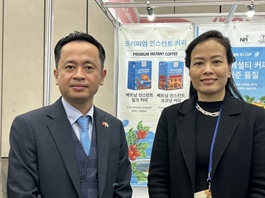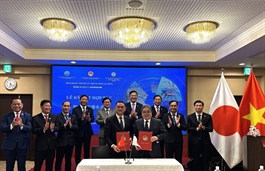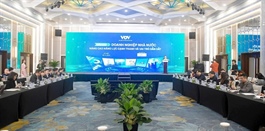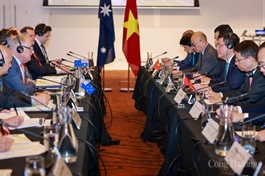Foreign M&A boosts confidence in industrial, energy sectors
Foreign M&A boosts confidence in industrial, energy sectors
As M&A activities ramp up, stakeholders assess the implications for the Vietnamese economy and market environment.
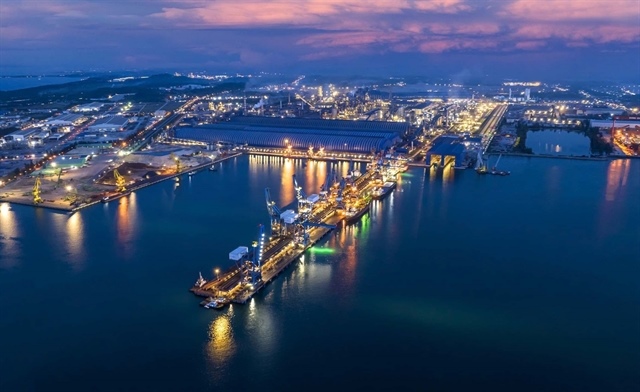
A view of the Dung Quất Economic Zone. — VNA/VNS Photo |
Foreign investments in Việt Nam's industrial and energy sectors are on the rise, signalling strong interest from international players and presenting new opportunities for growth.
As mergers and acquisitions (M&A) activities ramp up, stakeholders are assessing the implications for the Vietnamese economy and market environment.
In mid-November, a notable discussion took place involving Quảng Ngãi provincial authorities and Hyundai Eco Vina, a subsidiary of the South Korean conglomerate HD Hyundai.
This meeting focused on the planned acquisition of the industrial project from Doosan Enerbility Vietnam at the Dung Quất Economic Zone.
CEO of Hyundai Eco Vina Seung Hyun Choi said that the legal processes for this transfer are underway, with completion expected by December. Following the acquisition, the company plans to engage in the production of LNG storage tanks, reinforcing its foothold in the energy sector.
This specific deal is part of a broader trend highlighting the increasing volume of foreign investment in Việt Nam's industrial landscape.
Recent reports from Grant Thornton, an international auditing and consulting firm, outline how Korean investors have been particularly active, capitalising on M&A opportunities to enhance production capabilities and reduce operational costs.
Another prominent example of this trend occurred in October when OCI Holdings, a leading South Korean energy and chemical group, acquired a 65 per cent stake in Elite Solar Power Wafer.
This facility, currently under construction, aims to produce solar wafers with an initial capacity of 2.7GW and a projected investment of approximately US$120 million.
OCI's investment reflects its strategy to source polysilicon from its existing manufacturing plants directly, improving supply chain efficiency and targeting key export markets such as the United States.
Industry analysts note that South Korean investors are keen to leverage Việt Nam's manufacturing capabilities while benefiting from lower labour costs. Their preference for substantial equity stakes in acquisitions demonstrates a long-term commitment to the Vietnamese market.
Despite these positive developments, obstacles persist.
Chairman of the Korean Chamber of Commerce in Việt Nam (KOCHAM) Kim Nyoun Ho emphasised the need for improved investment conditions and business environments.
He highlighted KOCHAM's upcoming initiatives to address operational challenges faced by member firms and urged simplification of administrative procedures.
The recent M&A activities underscore the attractiveness of Việt Nam's industrial and energy sectors, which have become leading domains for foreign capital amidst substantial M&A transactions.
The energy sector has notably surged, with recorded transaction values reaching approximately $115 million in October, Grant Thornton's November report showed.
Meanwhile, industrial production maintained significant activity with transactions valued at around $109 million.
As foreign investment continues to flow into Việt Nam, stakeholders recognise the importance of enhancing the investment framework to bolster confidence.
Vice Chairman of the Singapore Business Association in Việt Nam Seck Yee Chung called for aligning local regulations with international standards. The inclusion of conditional public tender offers and provisions for forced buyouts in the securities law would provide a more comprehensive legal framework for investors.
Kenneth Atkinson, representative of the British Business Association (BritCham), said that Việt Nam needs over $136 billion in investments to develop its electricity generation and transmission sectors between 2026 and 2030.
He also pointed out that the private sector plays a crucial role in mobilising necessary capital through mechanisms such as green loans and sustainable bonds, which remains important.
However, Atkinson highlighted ongoing challenges, including the absence of a national green classification framework, limited requirements for ESG (Environmental, Social and Governance) reporting and inadequate incentives for green financing.
To address these issues, the BritCham representative recommended establishing a clear regulatory framework and national classification system for green finance.
He emphasised the need to strengthen ESG disclosure requirements to align with international standards and to implement independent verification mechanisms.
Furthermore, he advocated the creation of a credit guarantee fund or risk mitigation support for green financing, as well as expanding incentives for green lending and circular economy initiatives.
- 09:29 21/11/2025




